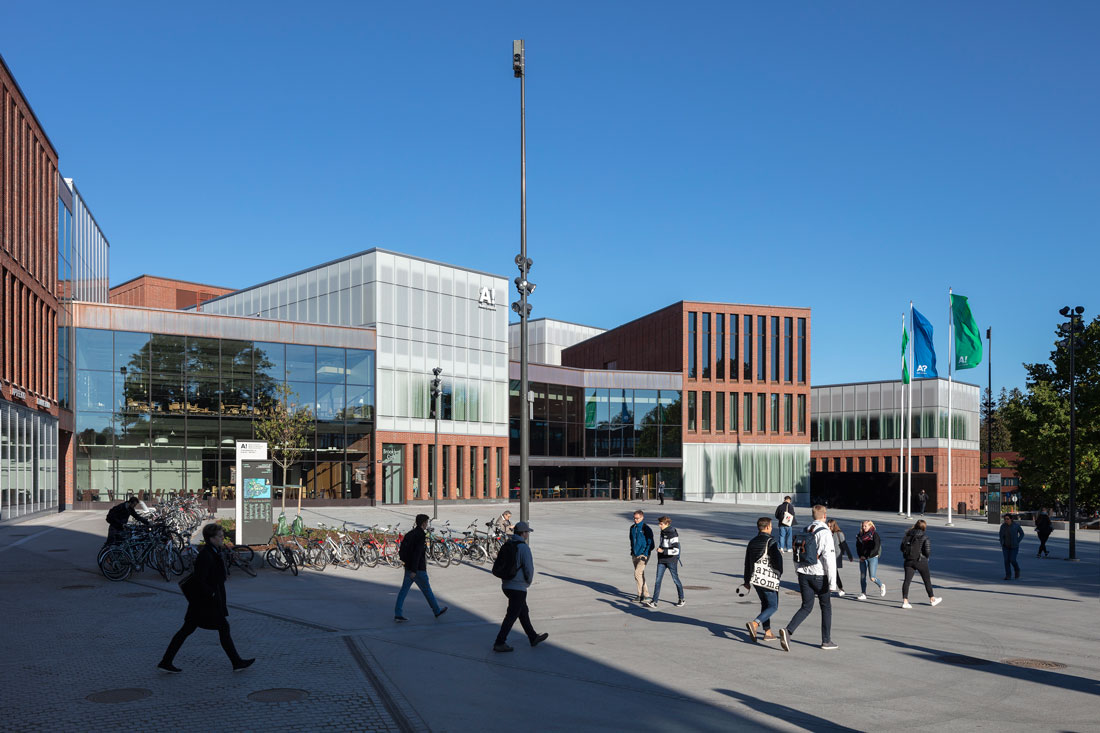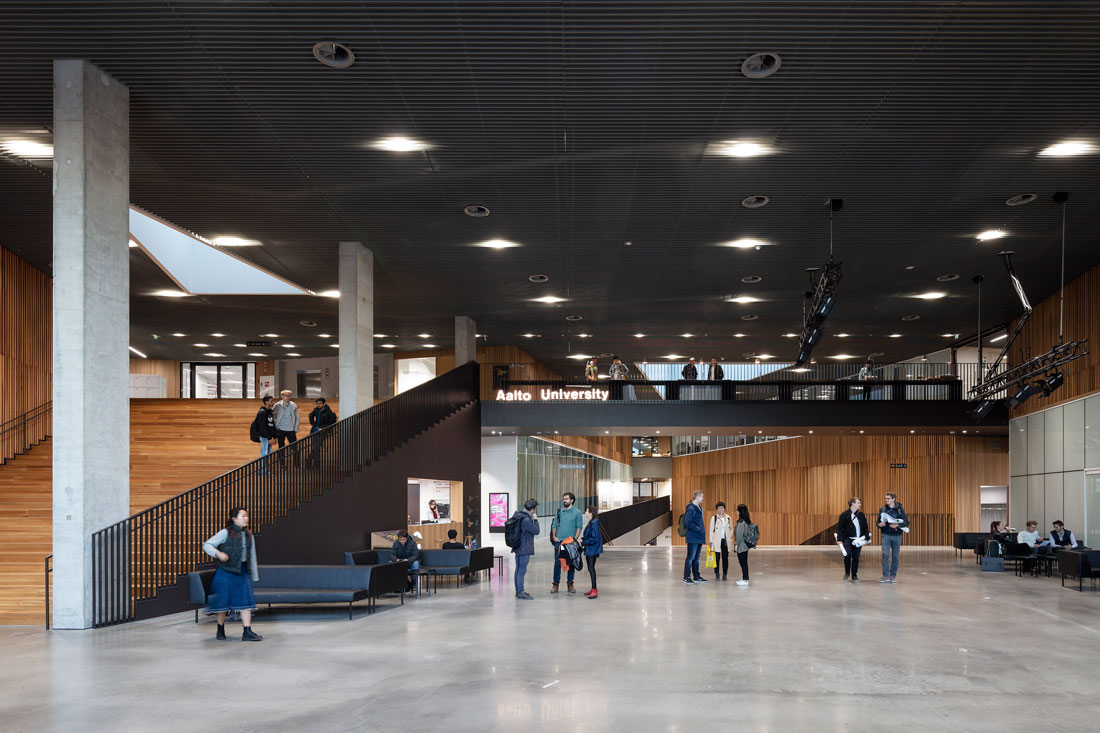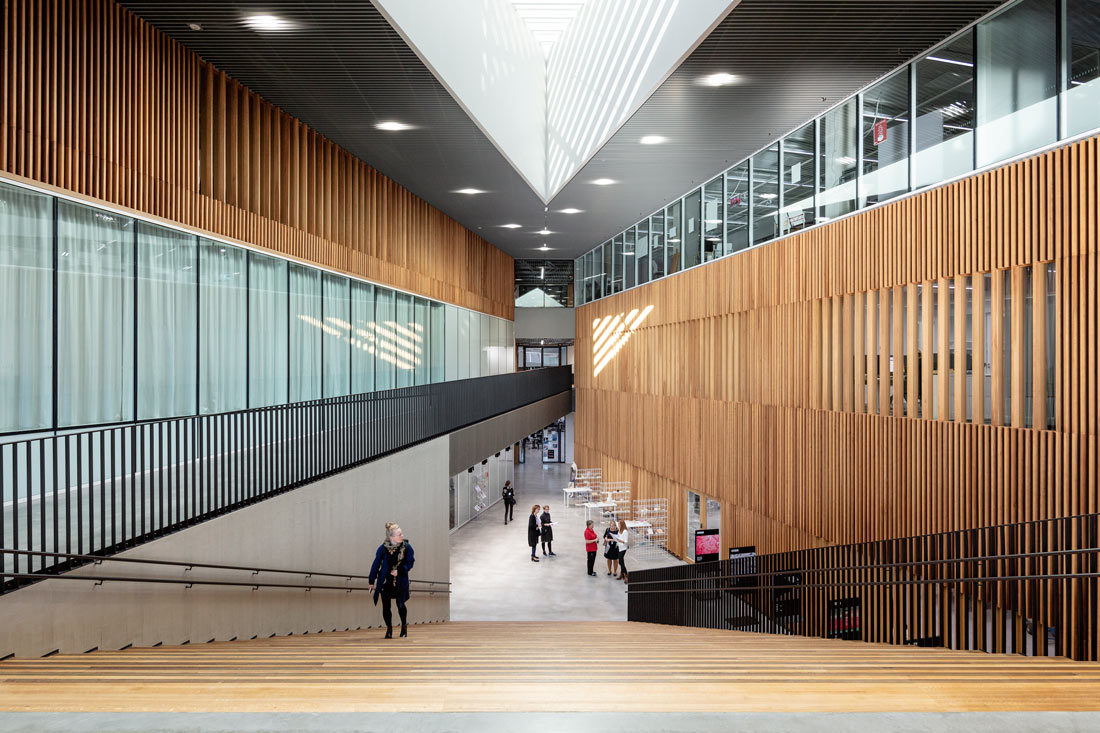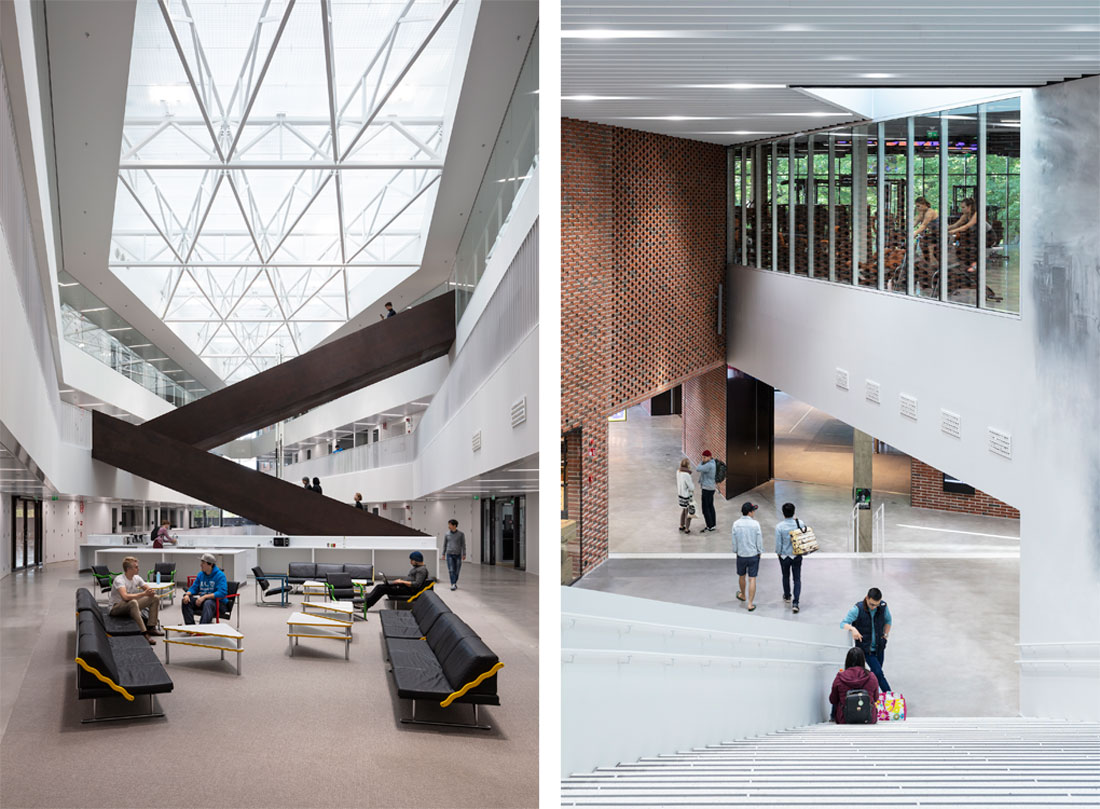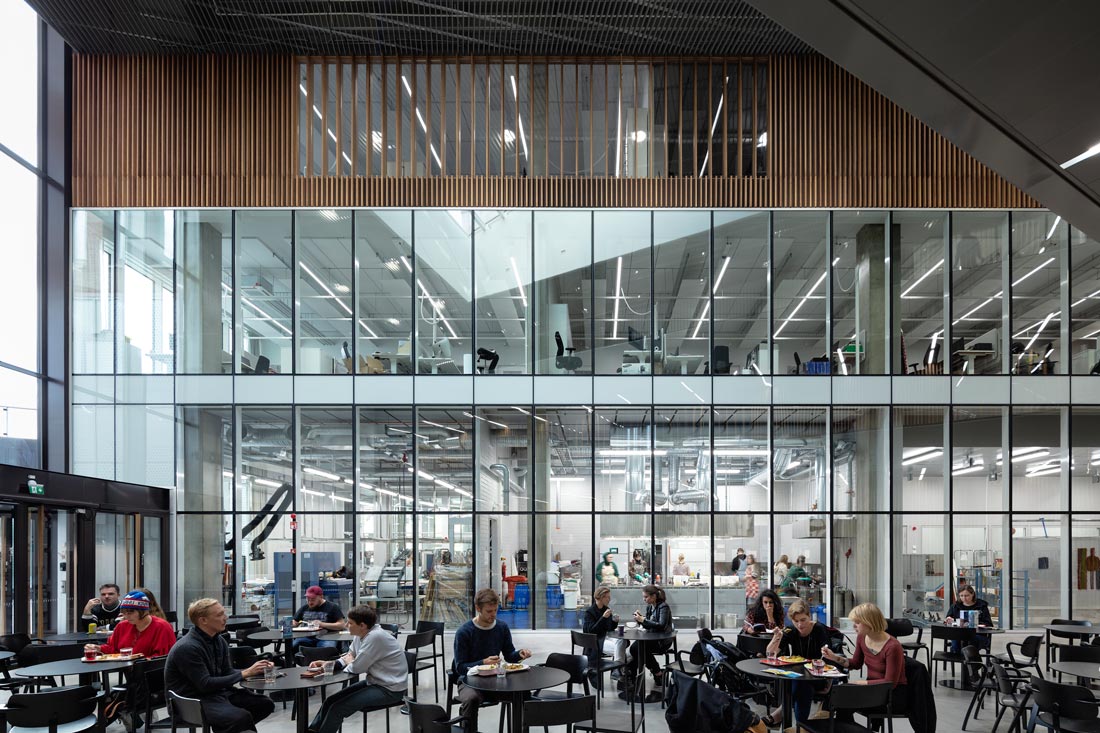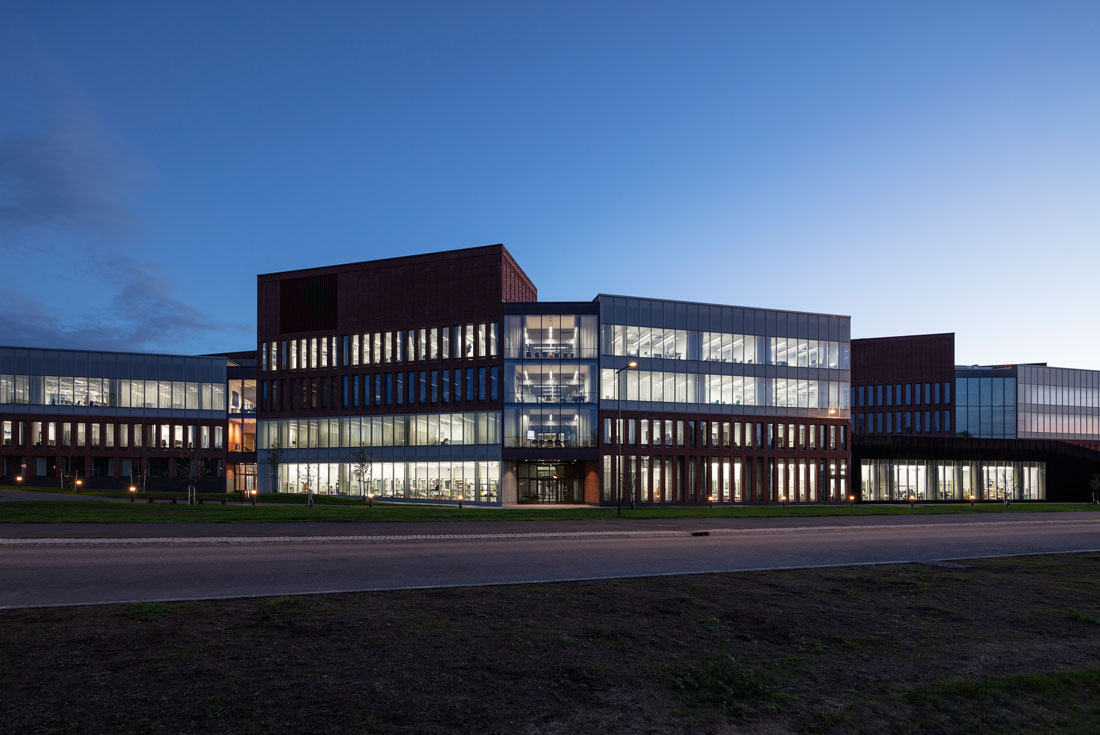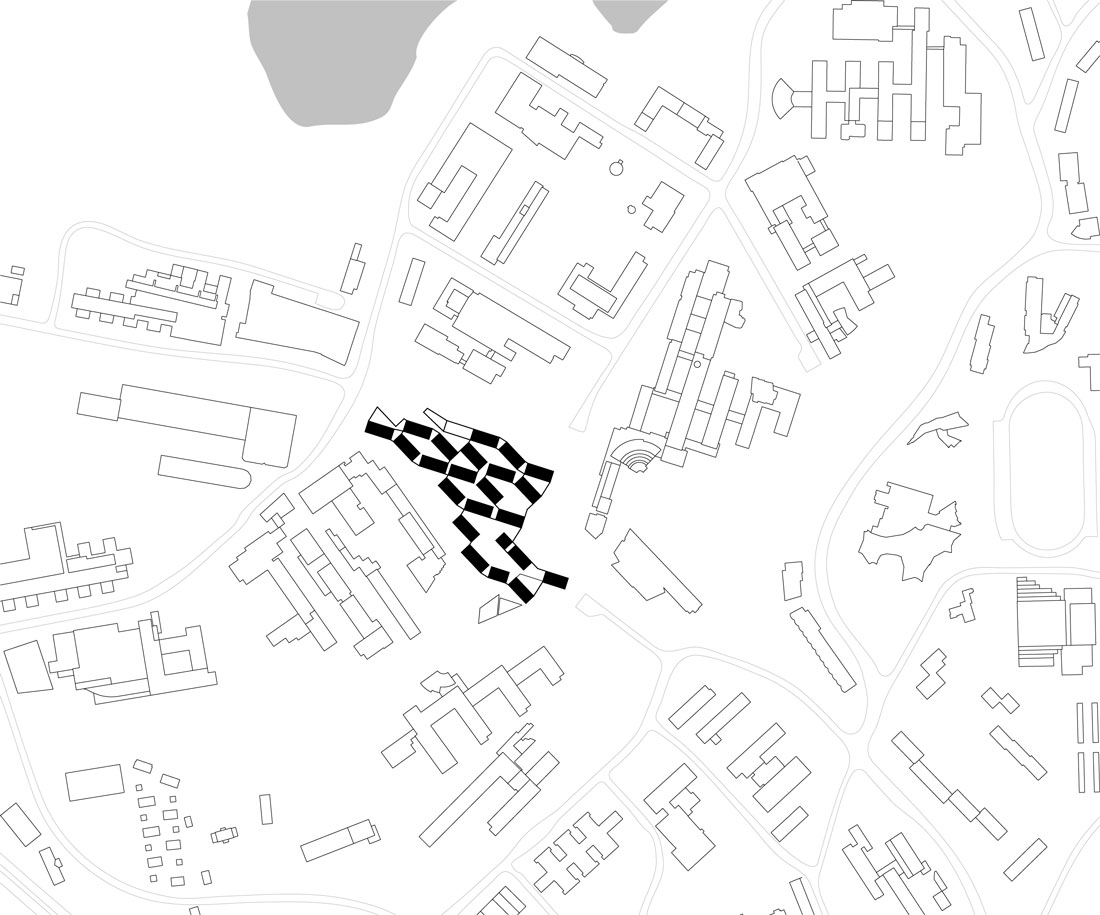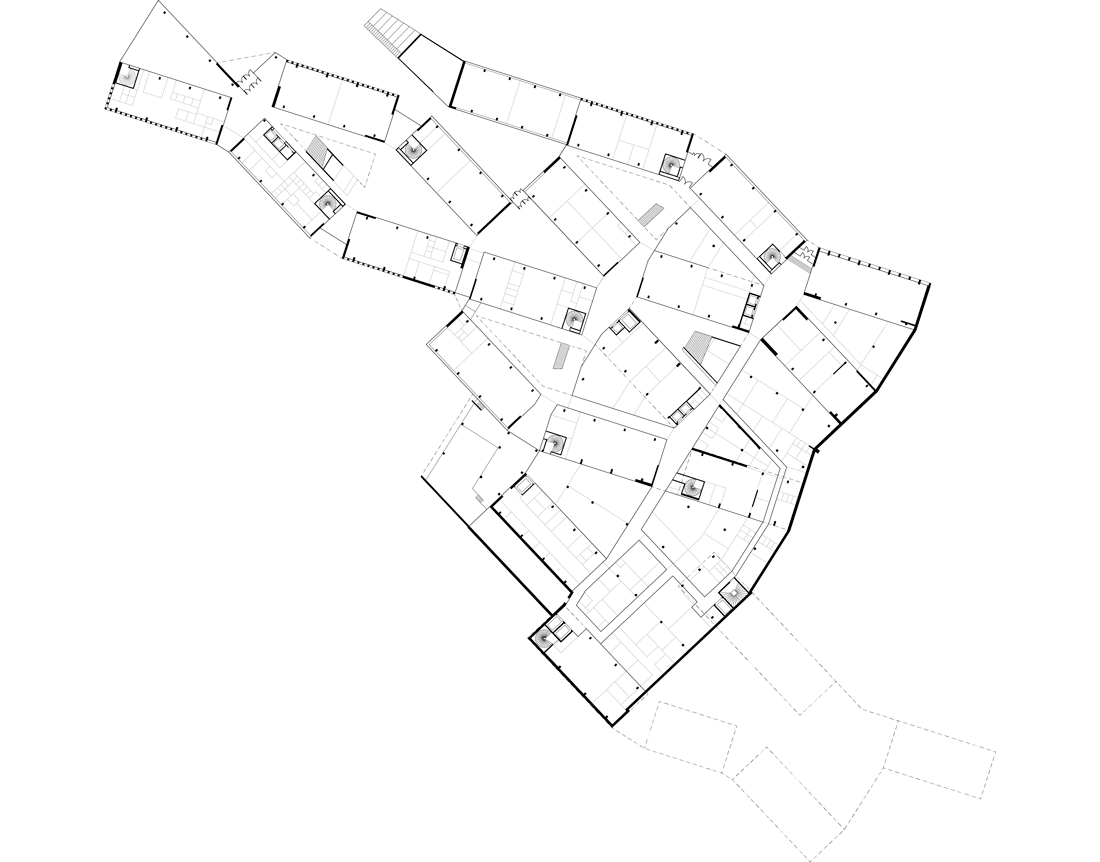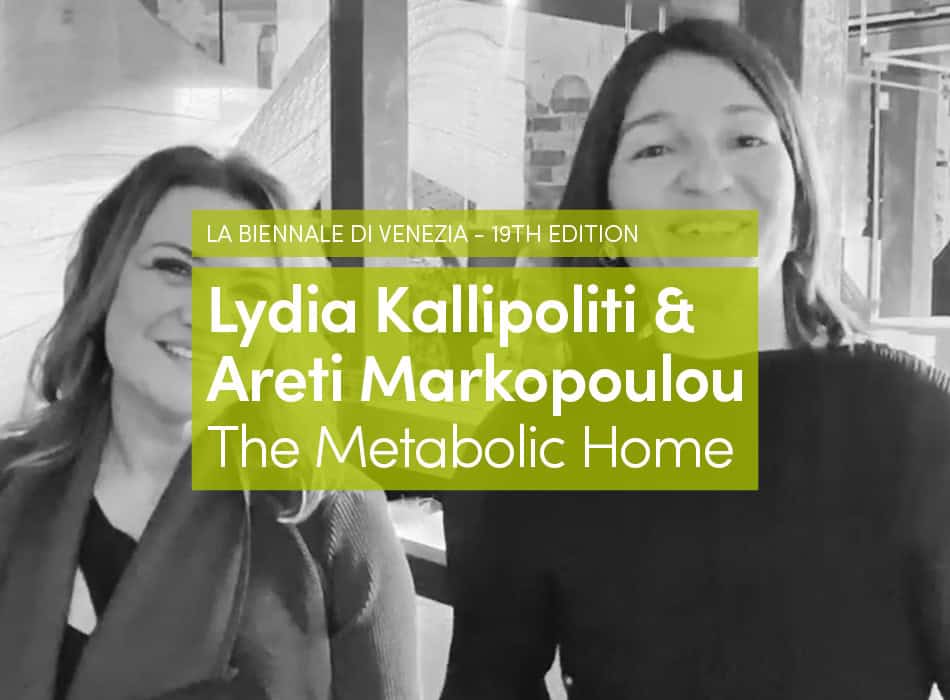If the United Nations are right and Finland is the happiest nation in the world, architecture plays at least a small part in that. In Finland, architecture and design are considered every person’s right, a means for creating wellbeing. New libraries, museums and schools are places for learning, relaxing and meeting. Finns have always improved their society with new ideas and innovations.
Now, Finland is investing in its future creative and commercial fields by creating a new type of education venue which combines design and business under the same roof. The brand new building complex at the Aalto University campus, designed by award-winning Finnish bureau Verstas Architects, is dedicated to the concept of doing things together. It is a place for casual encounters and collaboration between students and teaching staff, for intense creation, and for teaching and research in creative and business fields. This cooperation is expected to foster new types of start-ups, companies and future talent.
The new building complex is shared between the Aalto University School of Arts, Architecture and Design, and the School of Business, both high ranking globally. It has 40,000 square meters of space and hosts 1,850 students and 350 employees. The complex is an unusual mix of functions: it includes the A Bloc shopping centre and is built above and accessed directly from the new Aalto University Metro station. The ground floor lobby is open to the public.
The building adapts to the cosy scale of its surroundings. World-famous architects Aino and Alvar Aalto’s masterplan for the Otaniemi district in the 1940s created a village-like campus area. The new building forms a completely new square with the old, iconic main building, thus adding a spot of urban bustle to the leafy campus.
The Architecture of Working Together
The spatial layout supports interaction and flexible use of the building. “We have aimed to encourage encounters by placing workshops from different fields on the same floors and mixing staff and student spaces,” explains architect Jussi Palva from Verstas Architects. “In addition, students from the School of Business and the School of Arts, Architecture and Design have some courses together. This means that some of the spaces are very concretely shared. Users will meet in the squares, cafeterias, student galleries and various group-working spaces, or simply on the stairs that are one of the main visual elements in the building.”
The building complex is huge, but it is designed to appear as clusters of smaller buildings that have a comfortable scale. The building unfolds as a carefully planned spatial sequence. Rooms are arranged around interior courtyards with open views to all the floors and the stairs between them, which creates a sense of space. The public lobby stands out from the other spaces and helps users orient themselves in the building. The façades are red brick and patterned glass and complement the existing campus architecture in a contemporary way.





